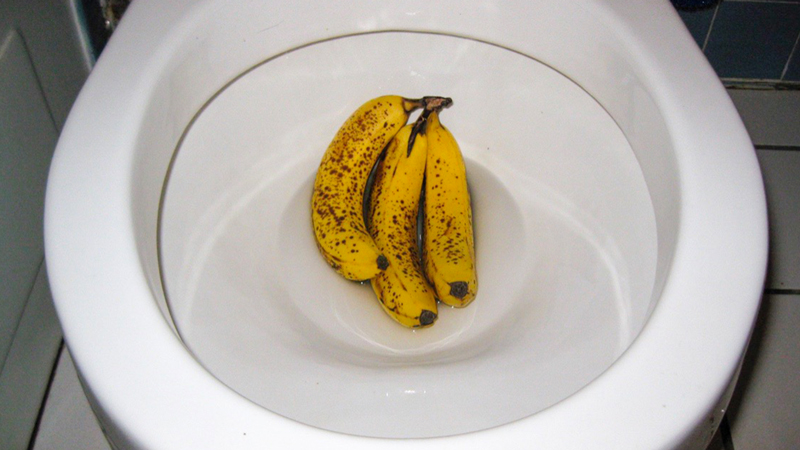Is it Prudent to Flush Food in the Toilet?
Is it Prudent to Flush Food in the Toilet?
Blog Article
Are you currently in search of critical information on Think Twice Before Flushing Food Down Your Toilet?

Introduction
Many people are frequently confronted with the predicament of what to do with food waste, specifically when it pertains to leftovers or scraps. One typical question that occurs is whether it's fine to flush food down the commode. In this article, we'll delve into the reasons people may think about flushing food, the repercussions of doing so, and alternative approaches for appropriate disposal.
Reasons why people may take into consideration flushing food
Lack of recognition
Some people may not be aware of the prospective damage caused by flushing food down the commode. They might mistakenly think that it's a harmless technique.
Comfort
Flushing food down the commode may appear like a fast and easy solution to getting rid of undesirable scraps, specifically when there's no nearby garbage can offered.
Negligence
In some cases, individuals may merely pick to flush food out of large laziness, without considering the repercussions of their activities.
Consequences of flushing food down the bathroom
Environmental impact
Food waste that winds up in rivers can contribute to contamination and damage marine communities. Additionally, the water used to purge food can strain water resources.
Plumbing concerns
Flushing food can cause clogged pipelines and drains, causing pricey pipes repair services and inconveniences.
Sorts of food that should not be purged
Fibrous foods
Foods with coarse textures such as celery or corn husks can get tangled in pipes and cause blockages.
Starchy foods
Starchy foods like pasta and rice can absorb water and swell, bring about clogs in pipelines.
Oils and fats
Greasy foods like bacon or cooking oils need to never ever be flushed down the commode as they can solidify and cause clogs.
Appropriate disposal approaches for food waste
Making use of a waste disposal unit
For homes outfitted with garbage disposals, food scraps can be ground up and purged via the pipes system. Nevertheless, not all foods appropriate for disposal in this manner.
Recycling
Specific food packaging products can be reused, reducing waste and lessening ecological impact.
Composting
Composting is an environmentally friendly way to deal with food waste. Organic materials can be composted and utilized to enhance soil for horticulture.
The relevance of appropriate waste administration
Lowering ecological harm
Correct waste monitoring techniques, such as composting and recycling, help decrease pollution and maintain natural resources for future generations.
Safeguarding pipes systems
By preventing the technique of flushing food down the commode, house owners can prevent expensive plumbing fixings and maintain the integrity of their plumbing systems.
Verdict
In conclusion, while it may be alluring to flush food down the toilet for comfort, it is very important to understand the prospective effects of this action. By embracing proper waste management practices and throwing away food waste responsibly, people can contribute to much healthier pipes systems and a cleaner atmosphere for all.
FLUSH FOOD DOWN THE TOILET?
FLUSHING FOOD CAN CAUSE BLOCKED DRAINS IN YOUR HOME
All of the plumbing fixtures in your home are connected to the same sewer pipe outside of your home. This outdoor sewer pipe is responsible for transporting all the wastewater from your home to the Council sewer mains. Even small pieces of food that go down the kitchen sink can cause problems for your sewer. It should therefore be obvious that flushing larger bits of food, such as meat, risks a clog in either the toilet itself or the sewer pipes. Flushing greasy food is even more problematic because oil coagulates when it cools, coating the interior lining of your pipes.
THE TOILET IS NOT A BIN
Food isn’t the only thing that people shouldn’t be flushing down the toilet. People use the toilet to dispose of all kinds of things such as tampons, makeup wipes, dental floss, kitty litter and even underwear. Water goes to great lengths to educate residents about the high costs and stress placed on wastewater treatment systems simply from people flushing the wrong stuff down the toilet. It costs taxpayers millions of dollars each year, and homeowners thousands in blocked drain repairs.
FLUSHING FOOD IS A WASTE OF WATER
Flushing food is a waste of our most precious resource - water. In June this year Level 1 water restrictions were introduced to protect water supply from drought conditions. Much of New South Wales continues to be affected by prolonged drought with recent figures revealing up to 97 per cent of the state remains in drought. Depending on whether you have a single or dual flush toilet, every single flush uses between five and 11 litres of water. In the current climate this is a huge amount of water to be wasting on flushing food that should be placed in the bin (or better yet, the compost).
https://www.jabplumbingsolutions.com.au/blog/can-you-flush-food-down-the-toilet

I came across that piece of writing on Think Twice Before Flushing Food Down Your Toilet when doing a lookup on the web. Those who enjoyed reading our article please remember to share it. We appreciate reading our article about Flushing Food Down the Toilet?.
Instant Quote Report this page